- Home
- Philip Pullman
Daemon Voices Page 26
Daemon Voices Read online
Page 26
Wanderer Above the Sea of Fog by Caspar David Friedrich (see overleaf) is almost the perfect image of that space I’ve called the borderland. The traveller is alone; what he surveys is being seen by no eyes except ours; he and he only has travelled to this mountaintop, and what opens out in front of him now—this great range of further mountains above the clouds, this mighty prospect extending as far as the infinite edges of the sky—belongs only to him. It’s an intensely romantic vision, and I acknowledge that. I’m perfectly happy to be romantic about my vision of reading, and education, and many things besides.
I think this is a good picture of reading because it depicts both the objective landscape that’s visible to the traveller and his subjective reaction to it. And one is an analogue of the other. The rocky crags, half obscured by the mist below—they are the struggles and difficulties he’s had to overcome to get here. Reading something worthwhile isn’t always an easy process; it does involve concentration and persistence. The tree on the distant crag, which his crooked elbow is pointing to: that’s almost a mirror-image of himself, emphasising his identification with nature. The tree looks at him as he looks at the tree; he is not only observing this landscape, he is part of it, and being observed by it in turn. When we read great literature, we see people such as ourselves in a context that gives a perspective and a meaning to the situation we’re in. The even higher mountains in the distance are a moral exhortation: there is further to go! There are greater tasks ahead, and greater visions to discover!
Wanderer Above the Sea of Fog by Caspar David Friedrich
This is the borderland. And the real point here, the reason I chose this picture, is that the figure in it, the image of the reader, as I’ve called him, is solitary. We are each alone when we enter the borderland and go on to explore what lies in it and beyond it, in the book we’re engaged with. True, we can come back and talk about it, and if we talk well and truthfully and interestingly enough we might entice other readers into it, and they too will explore it—but they too will be alone there until they in turn come back and tell us what they found there. And it may be that they will find treasures beyond compare that we’ve overlooked, or that the things that strike us as marvels will seem to them commonplace and not worth discussing.
This disjuncture between one reader and another happens quite often with children and their parents, the children demanding to be read the same book night after night, long after any remaining nourishment has been wrung out of it, the exhausted parent thinks.
“Look, dear, here’s a wonderful book called War and Peace—shall we try that one instead tonight?”
“No! No! I want Jolly Rabbit again!”
There is some magic in the borderland that keeps calling to them.
I’m going to take a sudden swerve now off at a right-angle and talk about some books that have been important to me, or in whose borderlands I’ve loved to wander. Pictures are very important here. I’m not alone in lamenting the change that came over children’s publishing, I suppose about thirty years ago, just when I was about to get going as a novelist, when it became no longer fashionable to illustrate children’s novels.
Picture books, beautifully and richly printed in many colours, were becoming easier to publish and to print—there was a great flowering of picture books that began around then—but black-and-white illustrators such as Anthony Maitland, or Fritz Wegner, or Robin Jacques, or Charles Keeping, or Victor Ambrus were no longer required to draw the pictures that we used to see in the work of Leon Garfield, Philippa Pearce, Rosemary Sutcliff and others. A great loss, it seems to me.
Anyway, the pictures I’ve loved in the books that I’ve loved are wonderful images of the borderland. And of course they work differently from words. Specifically, in this case, they function like a window—we can look through it, we can lean on the windowsill and daydream, we can send our imagination out like a bird to fly over the landscape someone has so generously imagined for us, and make our own discoveries there.
This is the cover of one of my favourites among Leon Garfield’s novels, The Pleasure Garden. The illustration is by the great Fritz Wegner, whose work I always wished would one day illustrate some words of mine. Anyway, because I’m talking about the borderland, which means the space the book or the illustration shares with me, I’m going to talk about my reaction to this picture—the things I enjoy about it—and be quite cheerfully subjective.
Cover of The Pleasure Garden, illustration by Fritz Wegner (see also this page)
So what I love here, as well as the marvellously romantic atmosphere, the lights in the trees, the lovers on the benches, the orchestra on the bandstand—all that—what I love is the great command of technique that Wegner has at the tip of his pen. I love the immense range of different kinds of small movement that the pen has made. Look at the way he represents the leaves, both on the trees nearby and on the ones in the distance. Look at the row of little arbours in the background, where couples or larger groups are sitting around tables under little lights, and each table has a tablecloth—lovely detail—and look at the sort of criss-cross trellis-work outside each of the arbours, which is quite different from the sort of cross-hatching we see in the shadows or in the dark sky above. Look at the crockets and finials on the lovely mock-Gothic bandstand, the sort of faux-oriental archways over the arbours, the delightfully absurd crenellations above them; and look at the range of textures his pen can evoke—the muslin of the dresses, the velvet of the coats, the bark of the trees—we know what they’d feel like to our hand. And the way the characters themselves are moving about or standing to talk or listen to the music—the young dandies showing off their fine calves, especially.
Here’s the opening paragraph of the novel:
Eastward in Clerkenwell lies the Mulberry Pleasure Garden: six acres of leafy walks, colonnades, pavilions and arbours of box, briar and vine, walled in between Rag Street and New Prison Walk. When night falls, the garden opens its eyes: lamps hang glimmering in the trees and scores of moths flap and totter in the shadowy green, imagining themselves star-drunk…
Lucky illustrator, to have prose like that to play with! Lucky novelist, to have an illustrator whose talent was worthy of it!
The next picture (see this page) is by an artist with almost no talent at all—for drawing, that is. It just shows how well you can draw without much talent.
Arthur Ransome was a wonderful writer, whose stories from Swallows and Amazons onwards have an extraordinary consistency of quality; and that quality, it seems to me, would be markedly reduced if they’d been illustrated by someone who could draw—someone like Fritz Wegner. Part of the charm of Ransome’s books is this very amateurish, lumpish, clumsy drawing—they wouldn’t be the same without it.
This is from The Picts and the Martyrs—and while he had no idea of how shoulders worked, for instance, or what a tree looks like at the point where it joins the ground, there is a great integrity about what he depicts and the way he depicts it. And clearly he loves the landscapes he’s drawing. His scratchy, laboured pictures have been part of my borderland for fifty years now, and I wouldn’t change one scratch.
Illustration from The Picts and the Martyrs by Arthur Ransome
Tove Jansson, on the other hand, couldn’t make a clumsy line if she tried. Tove Jansson is utterly unique: there is none like her, none. The peculiar, charming, disconcerting world she created out of the Finnish landscape and especially seascape is oddly both completely fantastical and realistically down-to-earth, or down-to-water. The thousands of little islands in the Gulf of Finland are exactly as she depicts them. I don’t know whether you have to be inoculated with her atmosphere when you’re young, as I was—I found her for myself on the shelves of the Battersea Public Library when I was nine years old—but once you’ve got it, it stays got. You have a free pass for life to the world of the Moomins.
Illu
stration from The Exploits of Moominpappa by Tove Jansson
The next picture comes from a French novel for young readers called A Hundred Million Francs, by Paul Berna, which was published in the late fifties. The illustrations are not actually French—they’re by Richard Kennedy for the UK Puffin edition—but I didn’t know that when I first read the book, and I didn’t care. I first came across it about the same time as I fell in love with the Moomins, or perhaps a year or two later, and as far as I was concerned it was about as French as anything could possibly be.
Illustration by Richard Kennedy for A Hundred Million Francs
I found his vision of a working-class area of Paris—those crumbling walls, those shaky roofs, the torn posters, the cranes, the building sites, the railway sidings, the smoky skies, the air of semi-dereliction, patched-up buildings—utterly thrilling and exotic. I gazed again and again at these pictures of a world not all that unlike the world I knew, because the London I lived in then still bore the scars of wartime bombing, and there were patches of dereliction and improvisation, or corrugated iron and weed-choked mud not far from the streets I moved around in, but somehow this was richer and sexier and much more interesting.
And without being aware of why I liked looking at his drawings, why they bore looking at again and again, I did love Richard Kennedy’s fluent and elegant line—scratchy, if you like, but scratchy in a quite different way from Arthur Ransome’s painstakingness, scratchy with swiftness and confidence. I’m sure the girl in Kennedy’s pictures turned up forty years later, called Lyra.
I’ve spoken about this book and its illustrations often, and just to show that it’s worth enthusing about one’s enthusiasms, someone once sent me a copy of the original French edition, which has a different title—The Horse Without a Head—and a different look altogether.
Illustration by Pierre de Hey for Le Cheval Sans Tête (The Horse Without a Head)
These illustrations, by Pierre de Hey, are fine, but I don’t think I’d ever have been captivated by them as I was by the Richard Kennedy pictures.
Something utterly different now. Through the scraper-board pictures by Denys Watkins-Pitchford, otherwise known as “B.B.,” I came to know and love that part of my outlying regions where the last gnomes in England live. The one following is from The Little Grey Men.
“B.B.” was one of the great writers about nature in children’s books; in Brendon Chase, for example, his descriptions of the woodland where his heroes spend a summer living wild are intensely lyrical. In some ways he was a limited writer, but the honesty and passion with which he talks about wild things and wild places suffuses his best passages with a love of landscape, and specifically the English landscape, that is irresistible.
Illustration from The Little Grey Men by “B.B.”
And I’m beginning to see, as I continue this talk, something about my particular borderland which might not be true of every reader—it probably isn’t. One more example of the sort of thing I respond to very strongly is Rupert Bear (see this page).
Alfred Bestall, who started drawing and writing the Rupert stories in the 1930s, quite soon established a formula for the Rupert page that was unlike anything else and full of the most delicate and charming imaginary landscapes. It was a formula that was instantly recognisable—I should think every British adult who was a child when Bestall was still at work would recognise a Rupert page at once—and it worked very well, not least because of the redundancy of information.
“Rupert Bows to the King” from Rupert by Alfred Bestall (see also this page)
There were so many ways to read the story that you could go over it again and again. But it was the landscapes that had me hooked. They were full of odd things; those strange constructions standing on posts in the sea in the bottom picture are prison cells. Bestall was full of fancy: I’m sure that’s the word for the special quality of lightness, delicacy, charm that his landscapes, his stories, embody.
But as I was thinking about this borderland business and wondering which pictures to show you and talk about, I found that there were some children’s books which, for all their great quality, for all the great quality of their illustrations, aren’t interested in landscape at all. I didn’t like them, or indeed love them, any less: it’s just that they were different.
Richmal Crompton’s William, whose literary life (in the course of which he grew not a day older) lasted even longer than Rupert’s, was drawn from the beginning by Thomas Henry, and it’s this scruffy, muddy-kneed schoolboy who is our image of William still and always. And while Henry, like Richmal Crompton, was very interested in human beings and delighted to represent the various comic types, both child and adult who impinged on the life of William and the Outlaws, the backgrounds against which these comedies took place were very rudimentarily sketched. We seldom have any sense of a real place full of its own atmosphere, its own intense and pungent personality, like Richard Kennedy’s Paris or Arthur Ransome’s Lakeland.
Illustration by Thomas Henry from William Again
Someone with nothing better to do and some time on their hands once tried to work out where in England William’s family lived, going by whatever clues they could find in the stories—the sort of time Mr. Brown arrived home from work, the range of shops there were in the village, that sort of thing; and the best guess they could make was that the Brown family lived in Bromley. It doesn’t seem very likely to me, but then it could be anywhere really. It’s just generic middle-class England. Crompton just wasn’t that interested in landscape, and nor are her stories, and neither was Thomas Henry, and it doesn’t matter; but it’s true.
Another great favourite of mine, and very much part of my borderland, is Emil and the Detectives.
This is set, of course, very firmly in Berlin, but you wouldn’t really know that from these wonderful drawings by Walter Trier. I’ve spoken about line before—Kennedy’s line, Wegner’s line, Jansson’s line—Walter Trier’s line is immediately recognisable as his, and wonderfully fluid and expressive. But they could be sitting anywhere, these children, there’s no background at all, and the room they’re in is completely invisible. They could be in Arizona. They could be on the moon. But just look at those lines! What economy! What versatility! What elegance and wit, how they rhyme with one another! Here they represent the children’s hair—there they are the curve around the side of the jug of chocolate—somewhere else they are the struts in the back of the chairs—and down below they are the shadow under the table—just quick lines, to do all that! And every single figure is characterised differently, and he’s got ten of them—ten! Sitting around a single small table. And a cake. Genius, really.
“Pony Hütchen went from one to the other pouring out delicious hot chocolate” by Walter Trier
Just look at the journalists in the next picture, each one a complete individual. See how cleverly he’s arranged them in the space, leading the eye from Emil back to the editor at his desk, cigar in hand; see how the room is suggested with the barest of means, the desk lamp, the suggestion of some kind of telephone, or it might be a typewriter or a teleprinter, it doesn’t matter, because suggestion is all we need here to evoke the busy and important life of a great modern newspaper—modern for 1930, of course.
“The newspaper men asked Emil a great number of questions” by Walter Trier
But for Walter Trier and his illustrations for Emil, just as for Thomas Henry and his pictures of William, the landscape wasn’t interesting for its own sake. It was a place for something to happen in; it might as well have been a stage set. The interest of those stories lies not in the spaces they depict, the places, but in the people who move and act and talk in them. The little town of Bromley might as well have been Andover or Gerrard’s Cross; the big city of Berlin might as well have been Vienna or Amsterdam. The work of Arthur Ransome, on the other hand, is quite inconceivable with
out its very specific and particular setting in the Lake District, the lakes, the fells, those great silent hills that he loved so much.
And I wonder whether there’s a genuine difference here between two kinds of writer, two kinds of illustrator, two kinds of children’s book. For one kind, action and character are the important things, and the setting is more or less incidental; for the other kind, setting and landscape are absolutely integral to the kind of story they want to write—to the only kind of story they can write.
I think C. S. Lewis was talking about something like this when he described two kinds of readers: the one who cared only for the action and the suspense and didn’t care in the least whether the story was set in Camelot, or on Mars, or in Los Angeles; and the one like himself for whom such things as “snowshoes, and deep forests, and Hiawatha sort of names” were an essential part of the pleasure—I couldn’t find the essay in which he said this, or I’d quote his exact words, but I’m completely with him on the matter.
And as for the difference between one sort of book and the other, whether it’s a deep difference or a superficial one I couldn’t say, nor could I say whether or not it matters very much. It matters to me because I’m interested in it, but that’s all I can claim.

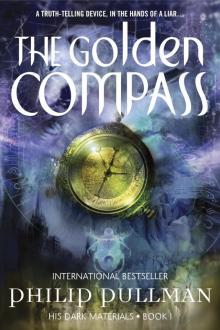 The Golden Compass
The Golden Compass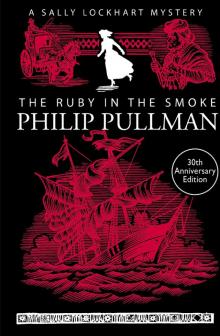 The Ruby in the Smoke
The Ruby in the Smoke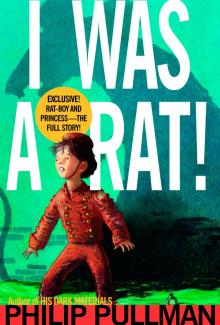 I Was a Rat!
I Was a Rat!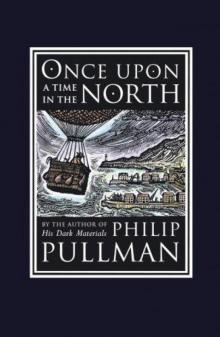 Once Upon a Time in the North
Once Upon a Time in the North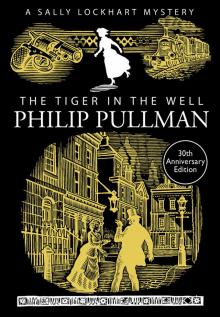 The Tiger in the Well
The Tiger in the Well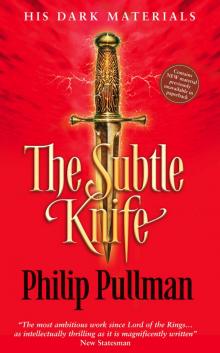 The Subtle Knife
The Subtle Knife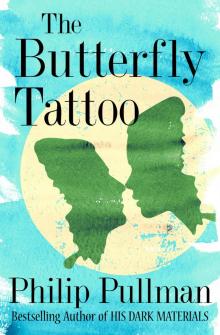 The Butterfly Tattoo
The Butterfly Tattoo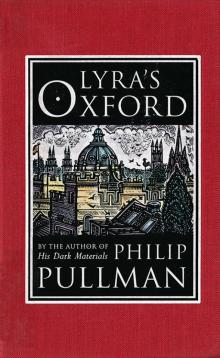 Lyra's Oxford
Lyra's Oxford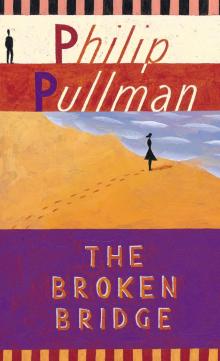 The Broken Bridge
The Broken Bridge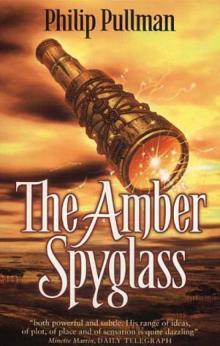 The Amber Spyglass
The Amber Spyglass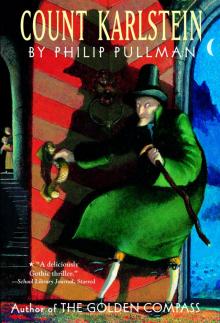 Count Karlstein
Count Karlstein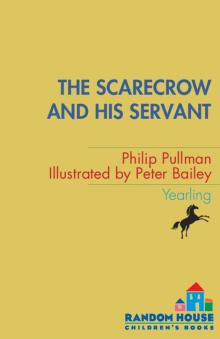 The Scarecrow and His Servant
The Scarecrow and His Servant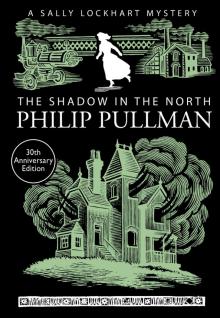 The Shadow in the North
The Shadow in the North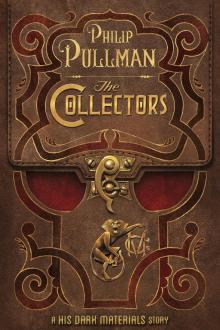 The Collectors
The Collectors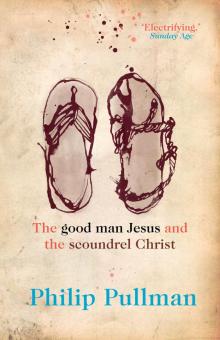 The Good Man Jesus and the Scoundrel Christ
The Good Man Jesus and the Scoundrel Christ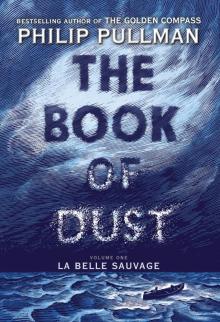 La Belle Sauvage
La Belle Sauvage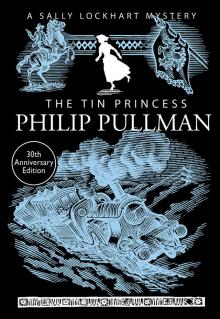 The Tin Princess
The Tin Princess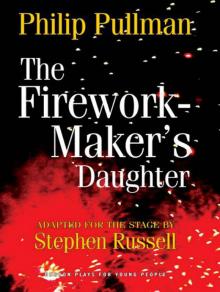 The Firework-Maker's Daughter
The Firework-Maker's Daughter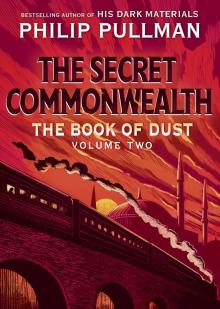 The Book of Dust: The Secret Commonwealth (Book of Dust, Volume 2)
The Book of Dust: The Secret Commonwealth (Book of Dust, Volume 2)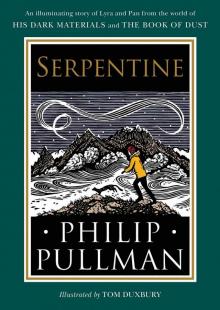 Serpentine
Serpentine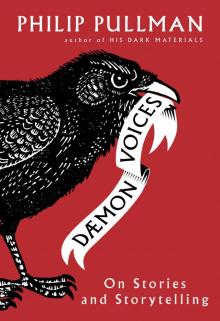 Daemon Voices
Daemon Voices The Amber Spyglass: His Dark Materials
The Amber Spyglass: His Dark Materials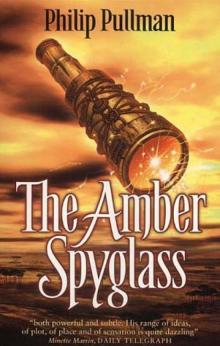 The Amber Spyglass hdm-3
The Amber Spyglass hdm-3 The Haunted Storm
The Haunted Storm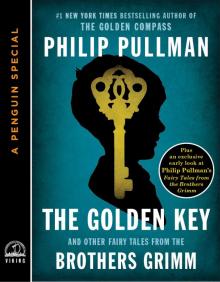 The Golden Key
The Golden Key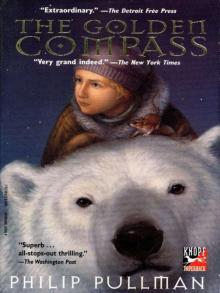 His Dark Materials 01 - The Golden Compass
His Dark Materials 01 - The Golden Compass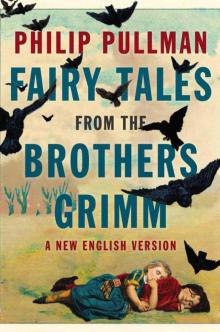 Fairy Tales from the Brothers Grimm: A New English Version
Fairy Tales from the Brothers Grimm: A New English Version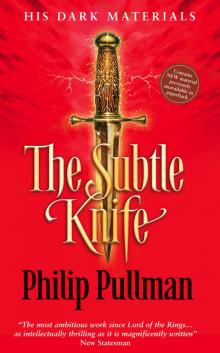 His Dark Materials 02 - The Subtle Knife
His Dark Materials 02 - The Subtle Knife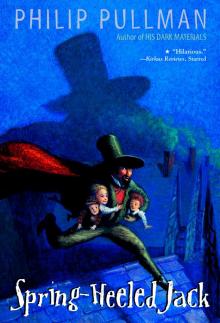 Spring-Heeled Jack
Spring-Heeled Jack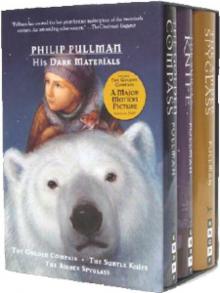 The Golden Compass hdm-1
The Golden Compass hdm-1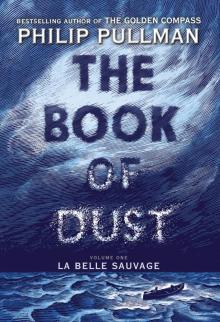 The Book of Dust, Volume 1
The Book of Dust, Volume 1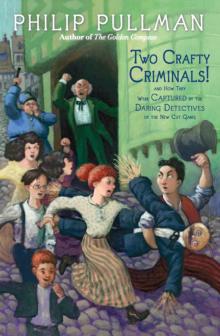 Two Crafty Criminals!
Two Crafty Criminals!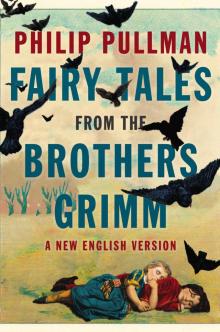 Fairy Tales from the Brothers Grimm
Fairy Tales from the Brothers Grimm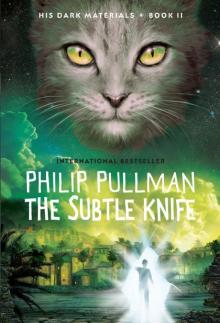 The Subtle Knife: His Dark Materials
The Subtle Knife: His Dark Materials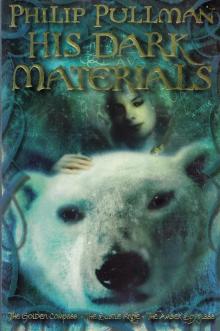 His Dark Materials Omnibus
His Dark Materials Omnibus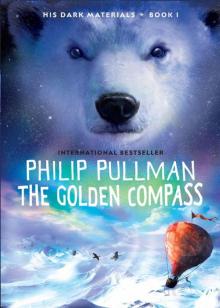 The Golden Compass: His Dark Materials
The Golden Compass: His Dark Materials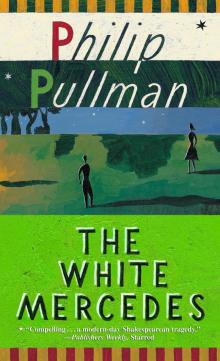 The White Mercedes
The White Mercedes